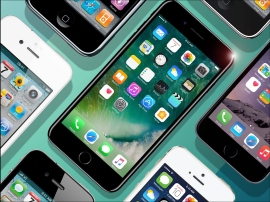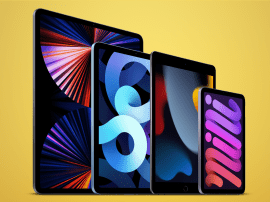LG G7 ThinQ vs Huawei P20 Pro: Which is best?
Can the G7 take out the reigning smartphone champion?

NEW CHALLENGER APPROACHING
After a long reign by Samsung, Huawei has finally usurped the throne with its triple-camera stunner, a big, beautiful phone that’s packed with power and features. But now the question is: how long can Huawei hold onto that vaunted position? LG is the latest challenger with its G7 ThinQ, which offers a similarly iPhone X-esque notched design and plenty of flagship power, albeit with a different set of features in store. Is it enough to help LG cut short Huawei’s reign? Here’s what we think, now that we’ve reviewed both handsets.

SMALL DIFFERENCES
At a quick glance, it would be easy to confuse these phones: both plaster a large, super-tall screen on the front and cut down on bezel to maximise its impact. And both have a cutout at the top of the screen to accommodate the camera module. But there are differences, of course. The P20 Pro still keeps a fingerprint sensor at the bottom, which extends the phone’s “chin,” while the LG G7 ThinQ smartly trims down that extra bezel (its fingerprint sensor is on the back).

SLIGHT EDGE
Flipping over, the P20 Pro certainly has the cleaner-looking back, following the format of the iPhone X even further – and if you get the fabulous gradient Twilight colour, you’ll get a visual perk that no other phone can quite match. On the other end, the G7 ThinQ looks a bit plain from the back. They’re very close overall, but the P20’s gradient options are absolutely dazzling, and enough to give it a slight edge.

NOTCH OFF
Both of these phones go for screens that are large and in charge, each coming in at 6.1in with the notch cutout up top – love it or hate it. But they’re different in key ways. The P20 Pro opts for a bold OLED panel, which impresses with its strong contrast and deep black levels, but it’s at a lower resolution than many flagship phones today – it’s a Full HD+ (1080p) display. As a result, it’s not as crisp as, say, the Samsung Galaxy S9.

SCREENING PROCESS
LG’s screen is a QHD+ (1440p) screen, on the other hand, packing in more sharpness – but it’s an LCD instead of an OLED. That said, it still looks pretty great, and a “Super Bright” mode should ensure that it stays very visible even in tough viewing scenarios. The G7 is a smidge crisper, while the P20 Pro is punchier. We’ll call it about even here.

HAPPY SNAPPERS?
Here’s a category in which Huwei earns a comfortable win. The P20 Pro beat the Google Pixel 2 to claim the world’s best smartphone camera, thanks to its triple-camera setup, and the LG G7 ThinQ does little to disrupt that result. The P20 Pro features an 8-megapixel telephoto sensor, a 20MP black-and-white sensor, and the crown jewel: a 40MP RGB sensor. Between the three, you get a 3x optical zoom and very good 5x “hybrid” zoom – as well as excellent everyday shots in most scenarios. Just considering shutting off the A.I. assist, which tends to blow out the colours in certain presets.

CAMERA BLOWOUT
And the G7 ThinQ? Well, it’s pretty good. It features a dual-camera array, with two 16MP back shooters – standard (f/1.6) and wide-angle (f/1.9). Everyday photos typically look great, plus low-light shots are solid and the “Super Bright” option helps a lot in near-dark scenarios. But we did run into one big, recurring issue: the G7 tends to blow out highlights, leaving big white blocks in clouds, for example. Overall, it’ll snag some really sharp shots – most of the time. But the P20 Pro’s camera setup is in a class all its own.

PLENTY OF POWER
The P20 Pro packs in Huawei’s own Kirin 970 chip, and while it’s been used in phones for several months now, it’s still near the top of the pack in terms of raw processing power. And with 6GB RAM onboard, this Android never faltered in our experience no matter what we were doing with the phone. On the other hand, the LG G7 ThinQ uses the newer Qualcomm Snapdragon 845, which has scored moderately higher in some benchmarks but doesn’t show any noticeable difference in day-to-day usage. The G7 has 4GB RAM in the base model and 6GB RAM in a surely-pricier edition, so you’ve got a choice – but 4GB should be plenty to keep things running

BATTLE OF THE BATTERIES
When it comes to battery life, the P20 Pro is one of the top performers in the flagship class with its massive 4,000mAh cell. The LG G7 ThinQ comes in much lower at 3,000mAh, but it also has the higher-resolution screen to power. The G7 can give you a strong day of usage and maybe a smidge more, but the P20 Pro can go pretty deep into day two depending on how hard you pummel it. LG has the benefit of wireless charging, but we’d gladly take significant more uptime.

VERDICT: THE P20 PREVAILS
The Huawei P20 Pro is an excellent all-around phone elevated by some dazzling looks – on the Twilight model, at least – a beefy battery, and the best smartphone camera around. The LG G7 ThinQ isn’t worlds apart in a lot of ways, from design to screen quality and power, but its myriad parts don’t add up to quite as compelling of a package.


